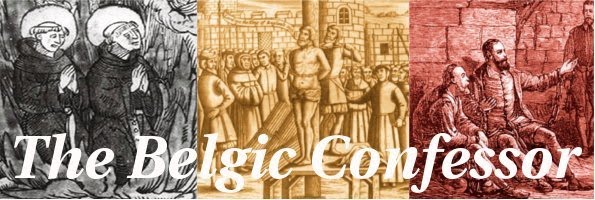His notes on differing understandings within the Dutch tradition of the meaning of covenant membership are very interesting. Two differing positions developed out of the 1834 Secession churches:
Covenant as objective reality
- De Cock entertained a broad view: the covenant is an objective reality for all those baptized into it. To be in the covenant means to have the benefits of Christ promised to one; the reality of the covenant does not depend on an act of faith, although faith is needed in order personally to apprehend the promises.
- This view distinguishes between covenant members and the elect; the promises of the covenant are by nature conditional on personal repentance and faith.
- Pieters and Kreulen asserted that the holiness of children referred to in 1 Cor. 7:14 is the external holiness belonging to all in the covenant (rather than the internal holiness of the regenerate).
- Many of those who broke from the Reformed Churches of the Netherlands (see below) to form the Reformed Churches (Liberated), including Schilder, adopted this position.
Covenant as the regenerate only
- Scholte emphasized that only those who could confess their faith, and confirm it by their walk of life, could be seen as true covenant members. These members are the regenerate, possessing internal holiness.
- Joffers said that the covenant was made with the elect only.
- This view did not necessarily imply a narrow view of who was in the covenant. Joffers appeared to view all baptized infants as regenerate/elect. A. Kuyper promoted the belief that infants were to be baptized on the presumption of their regeneration (his belief that all infants possess the "root" of faith lent support to this belief).
- While Kuyper affirmed that one must be vigilant in preaching faith and repentance, since the presumption might turn out, on future evidence, to have been mistaken, some of his followers failed to do this, leaving a legacy of presumed spiritual life.
- The 1905 synod at Utrecht of the Reformed Churches in the Netherlands (a new union including most of the Secession churches) affirmed the teaching of presumed infant regeneration "until... the opposite should be shown from their walk or doctrine". The justification, however, for infant baptism is simply the command and promise of God. (NB The Christian Reformed Church of North America adopted these decisions at the 1908 synod at Kalamazoo.) Schouls comments that in this system preaching typically urges the hearers to live as the regenerated people they are presumed to be.
- Kersten (who in 1908 united several independent congregations into the conservative Netherlands Reformed Congregations) held a similar but stricter, less optimistic view. Consistent with seeing true covenant membership as being the elect only, his preaching tended towards an introspective self-examination for "marks of grace".

No comments:
Post a Comment